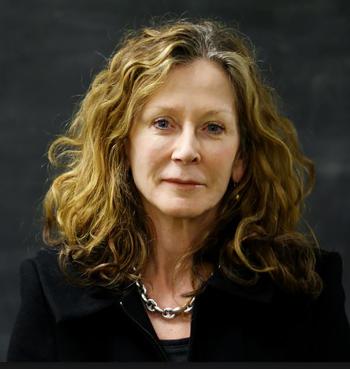Arizona State University is offering a unique new degree that will teach students from any background how to launch a successful venture.
The Master of Science in innovation and venture development is a transdisciplinary partnership among three schools at ASU: The Design School in the Herberger Institute for Design and the Arts, the W. P. Carey School of Business and the Ira A. Fulton Schools of Engineering.
The one-year, on-campus program, which is now accepting applications, will be experiential. Students will participate in several intensive studio courses and work in teams, according to Cheryl Heller, the director of design integration, a joint position among the business, engineering and design schools.
“They’ll choose an issue or a pain point, research it, identify a solvable problem, develop ideas, fail, prototype, develop a business model and learn the essentials of scaling the venture,” said Heller, who also is a professor of practice in innovation design.
The program is not just for people who want to start up a business in their garage.
“We are defining ‘venture’ in broad ways,” she said. “It means entrepreneurs but also people who will work inside a big company. Companies want people who know what to do with an idea, how to develop it, how to turn it into a division and how to scale it.”
The program is being funded by Tom Prescott, an alumnus of ASU and the former CEO of Align, the company that produces the Invisalign straightening system for teeth. Prescott has been involved in entrepreneurship at ASU for several years through the Tom Prescott Student Venture Fund. He announced the new degree program at the recent ASU Innovation Open pitch competition.
“It’s trying to create the real tension of building a real startup,” he said.
“The idea is to make this as realistic as possible and with all the venture funding we’ve been doing with student-led ventures, we know it’s hard to create that realistic thing,” he said.
“The project has to block out the sun — it has to be that important to advance itself,” Prescott said. “This will do that in an educational environment.
Heller said that students with any undergraduate degree are welcome to apply.
Cheryl Heller, director of design integration at ASU, a joint position between the business, engineering and design schools, said the new master's degree program is seeking students from all backgrounds.
“We’re looking for an entrepreneurial mindset, and they need to be able to communicate,” she said. “It’s exciting to think what an economist will bring to this or what a musicologist will bring to this.
“We want people from the nursing college, from Mayo, from the teachers college — anybody who wants to understand how you create an enterprise.”
Twenty-one faculty members from the three colleges have spent the past year working on the curriculum.
“It was an interesting process to shift from a faculty-centric idea of what students need to know to a student-centric perspective of what students need to be able to do,” Heller said.
“That shift from “This is what I teach” to “This is what they need” — (it) took a couple of influential people to help us see that.”
Students will have milestones they have to meet, and the studio courses are meant to be responsive.
“I have seen faculty try to eliminate as much unknown as possible. That’s the opposite of this. When you’re dealing with teams, it’s more like improv than control,” Heller said.
“It’s a way of teaching that demands living in the present instead of having a fixed agenda.”
The students also will learn the “soft skills” of entrepreneurship — high-performance teamwork, ethics and leadership.
The degree has a STEM certification, which activates additional financial aid for students who are veterans and also allows international students to stay an extra year to get work experience.
Heller founded the first Master of Fine Arts degree in social design at the School of Visual Arts in New York, which also is a cohort-based experiential program that teaches students to use the design process to address social and environmental challenges.
“I would always tell my students, 'This will be messy, like life. And you’ll learn how to navigate that messiness and the uncertainty that’s all around us now,’” she said.
“The decision I made early in my life was that you can be a person who waits for someone to give you an assignment that you love or you can decide that you’re never going to wait for somebody to do that and you’re going to go out and make your own opportunities.
“And this is for the people who want to make their own opportunities.”
Top image by Getty Images
More Science and technology

Lucy's lasting legacy: Donald Johanson reflects on the discovery of a lifetime
Fifty years ago, in the dusty hills of Hadar, Ethiopia, a young paleoanthropologist, Donald Johanson, discovered what would become one of the most famous fossil skeletons of our lifetime — the 3.2…

ASU and Deca Technologies selected to lead $100M SHIELD USA project to strengthen U.S. semiconductor packaging capabilities
The National Institute of Standards and Technology — part of the U.S. Department of Commerce — announced today that it plans to award as much as $100 million to Arizona State University and Deca…

From food crops to cancer clinics: Lessons in extermination resistance
Just as crop-devouring insects evolve to resist pesticides, cancer cells can increase their lethality by developing resistance to treatment. In fact, most deaths from cancer are caused by the…

